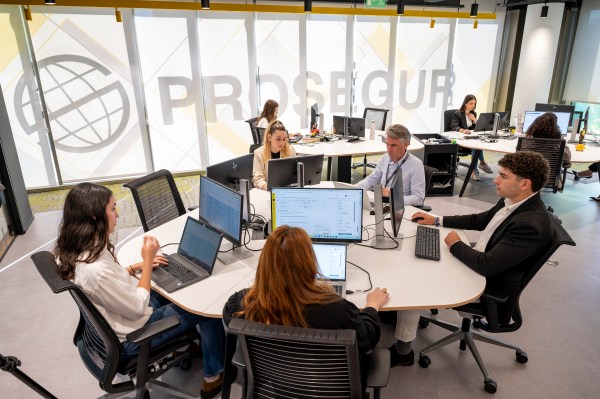A cobot is a robot programmed to work collaboratively with humans, whose purpose is to support different tasks and processes. They are designed to carry out repetitive work as well as high-risk tasks for workers.
These automatons are typically composed of several intelligent arms that can be integrated into production environments. They are also equipped with sensors and cameras that provide them with artificial vision, allowing them to interact with humans. These motion sensors are technological advances that have made these robots more versatile tools as they have improved safety in production environments in more and more industries.
The impact of cobots in Industry 4.0
The cobot concept is not new, as the first models date back to the 1990s. These tools are the result of the evolution of robots. It was the US company General Motors that was the first to include the first robots capable of facilitating the automation of certain tasks on its assembly lines.
Now, thanks to technologies such as the Internet of Things, IoT, Artificial Intelligence, AI, Big Data and 5G, these machines have improved their performance towards what are known as collaborative robots that can work together with humans. They do not seek to replace human labour, but to improve skills and streamline processes.
As revealed by the latest data collected by the World Robot Report of the International Federation of Robotics (IFS) in 2022, the presence of cobots is gradually increasing. Already in 2021 they accounted for 39% of the market share, 13% more than in the previous year. Meanwhile, companies such as Statzon expect this trend to continue to increase to 40% growth by 2026, driven by the growth of new technologies.
Characteristics of collaborative robots
Cobots stand out for being easy to install and easy to program. To start them up and move their components, all that is needed is an electronic device linked to the robot. This factor makes it easy for anyone to work with them, even if they do not have the required experience, as the programming is done through user-friendly software and applications.
They are more compact in size, a feature that, coupled with the ease of quick reprogramming, makes them perfect for relocating and performing other tasks in the company. This allows them to be flexible and easily learn different tasks; in this case, they can adapt to different stages of the production process.
As a result, cobots are an efficient, robust, safe and accurate tool capable of relieving workers of complex and dangerous tasks, which can lead to injuries and accidents.
Benefits of cobots
Their applications are particularly focused on object and material handling, such as packaging and palletising, as well as assembly and disassembly tasks, especially in electronics and automotive manufacturing.
Collaborative robots have mainly been developed to make people’s work easier, as they help and perfect tasks. They free up human teams from unsafe, repetitive, dirty or complex work, allowing them to focus attention on more attractive issues.
In addition, their implementation in the workplace improves the safety of the people with whom they interact and share tasks, as their integration reduces the exposure of workers to activities that can put them at risk, and reduces the number of injuries and serious accidents.
Are cobots and industrial robots the same?
The answer is no. Taking into account the defining characteristics of an industrial robot and a collaborative robot, some differences can be established.
- Ease of use and programming. Industrial robots are more complex machines that require expert supervision in programming and operation. Initially, these mechanisms were classified as special items and were only handled by a small number of personnel. In contrast, collaborative robots are designed to be easier tools to exploit. They have an intuitive programming interface and do not require any prior specialised training to operate; they even learn from the operators themselves, who teach them by example, which they then memorise.
- Mobility. Industrial robots are usually large. Cobots, on the other hand, are more versatile machines, suitable for both small production runs and heavy workloads, as they are designed to share space with humans.
- Investment. Cobots are more economical and, in the long run, prove to be a more profitable investment, as they are able to produce as another member of the company, in a very flexible way.
- Security. For collaborative robots, safety is paramount: they are designed to cooperate and become safe mechanisms in any process. They do not need any support; the machine’s own sensors perform the necessary tasks to protect the workers.
In which industries can collaborative robots be used?
Due to their flexibility, cobots are part of Industry 4.0 and can be used in virtually any manufacturing and any location. However, in some companies they are more successfully integrated, such as in the pharmaceutical, automotive, food consulting and medical industries. There are examples such as that of the food company Nestlé, for palletising at its plant in Switzerland. In the fields of health and pharmacology, they are used in the automation of tasks such as dose and mixture control.
Although there is still much innovation to emerge, cobots already play essential roles within companies. They have positioned themselves as decisive tools for scheduling processes in the manufacturing industry.









